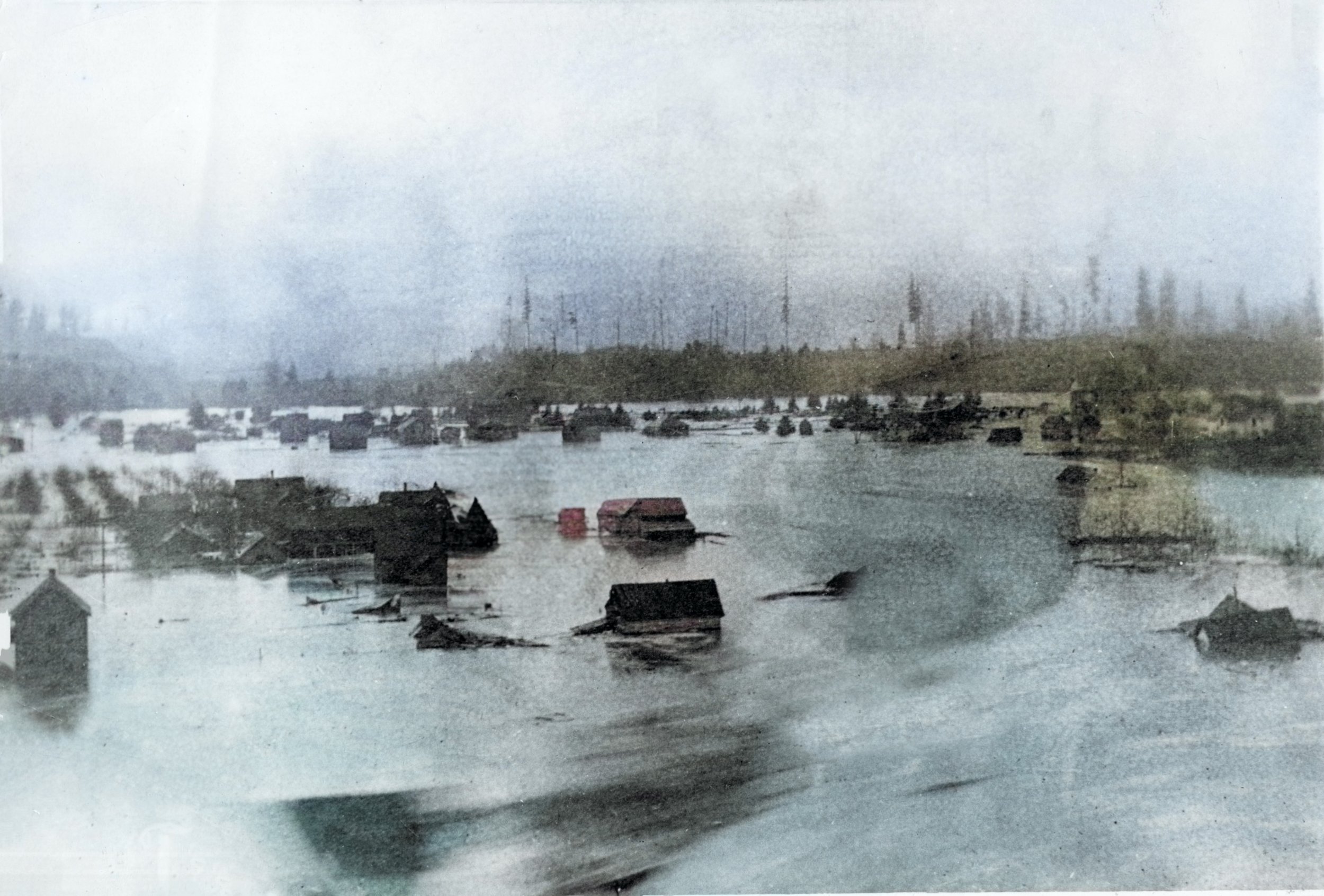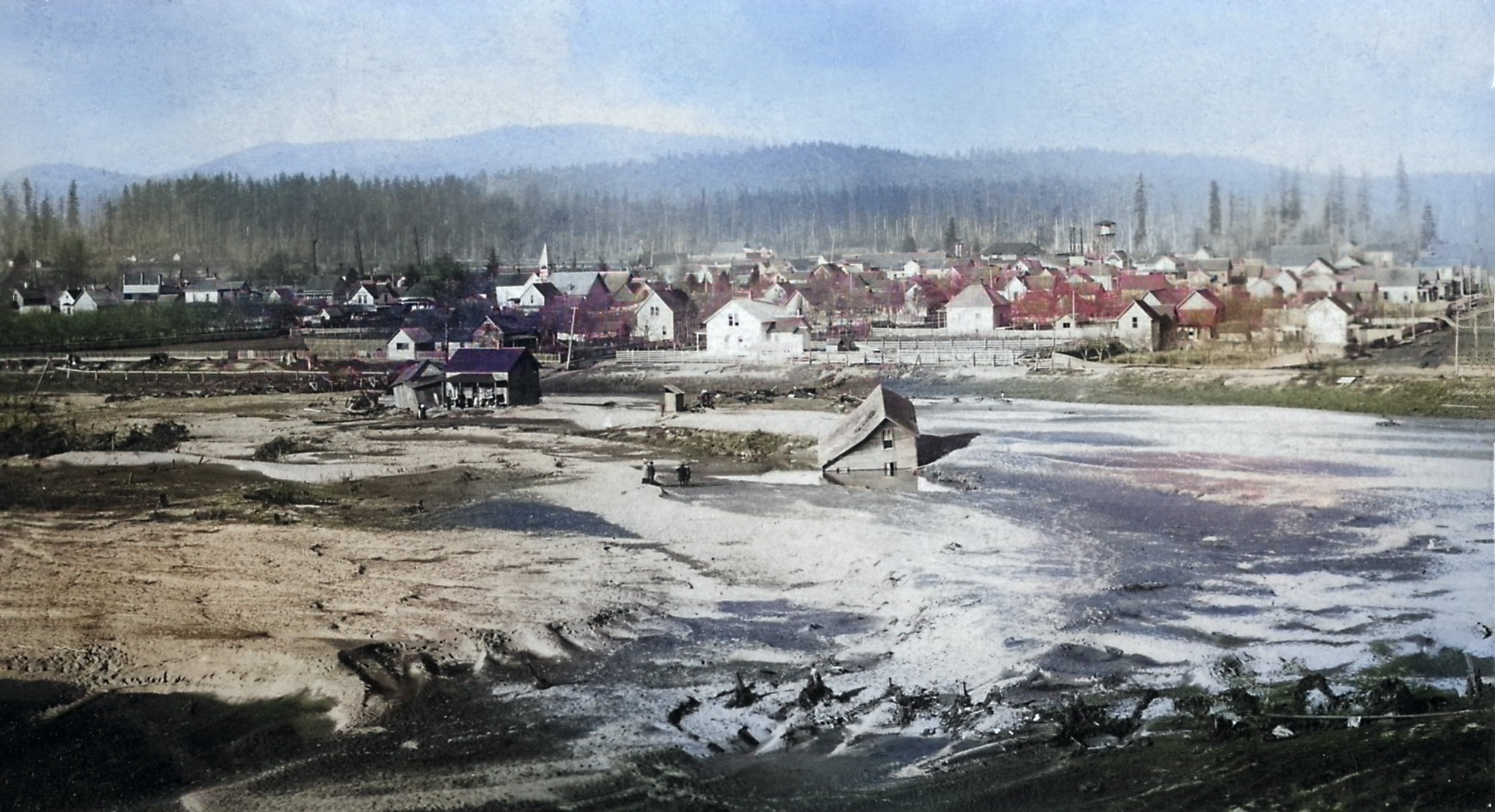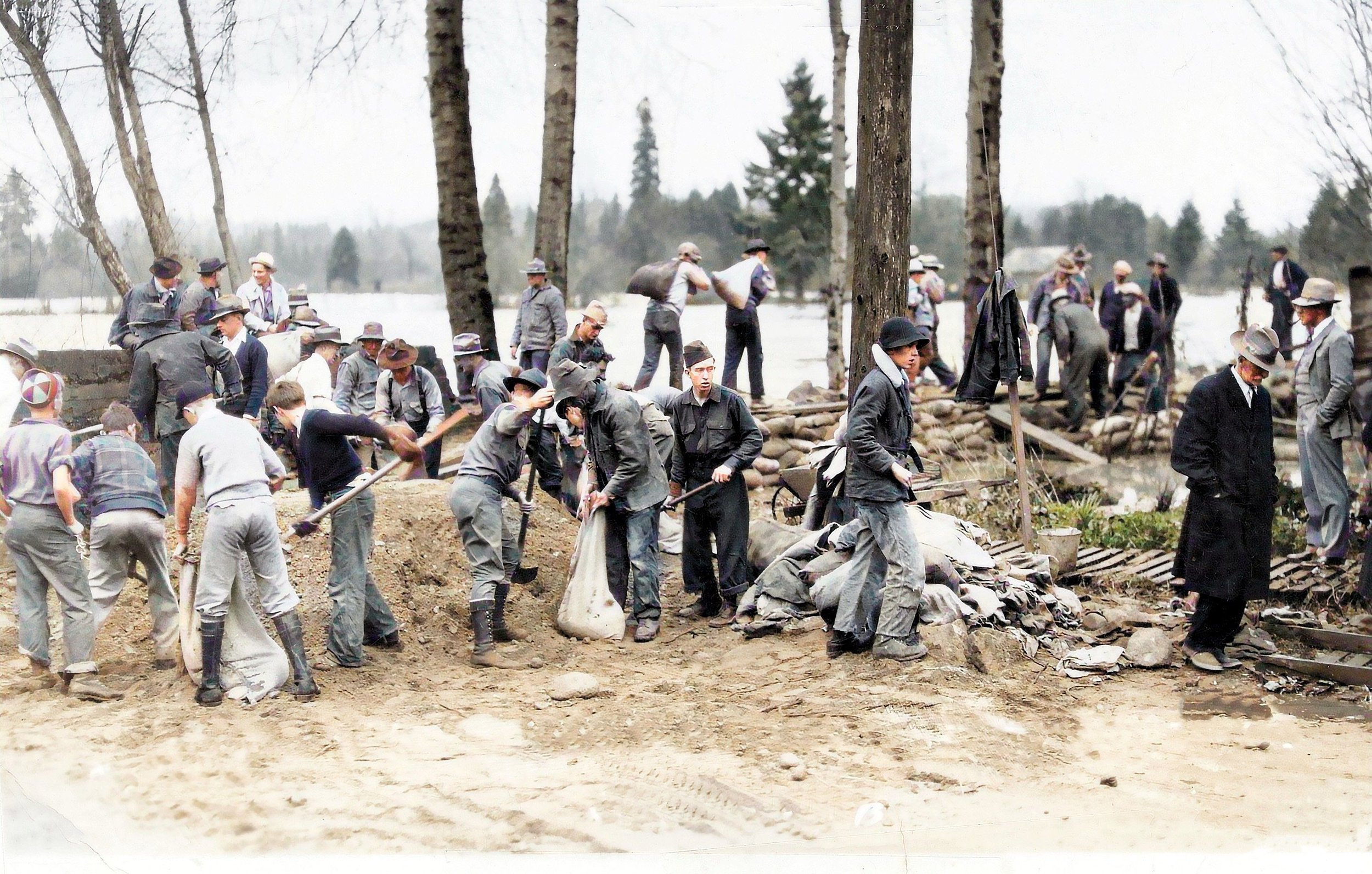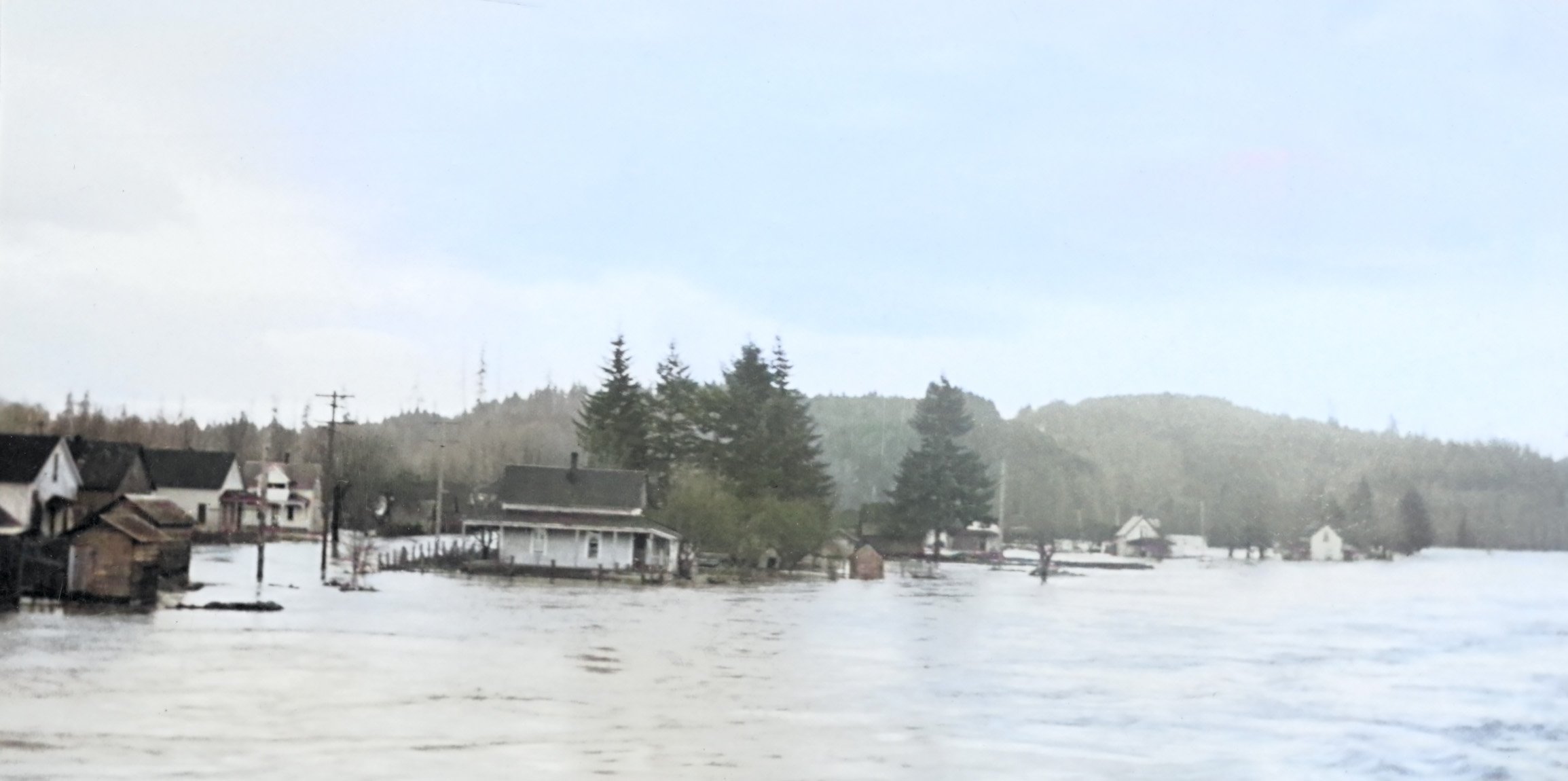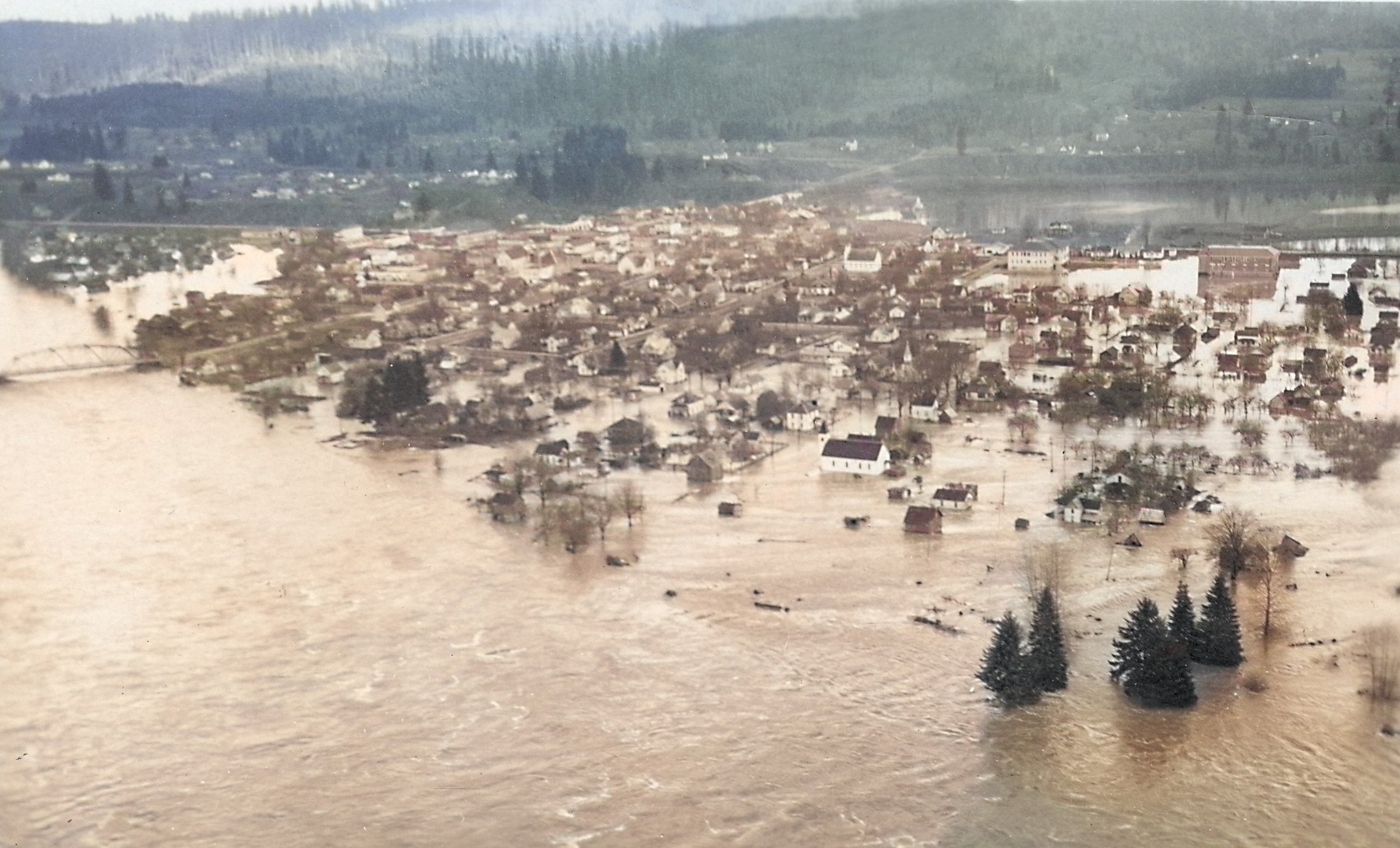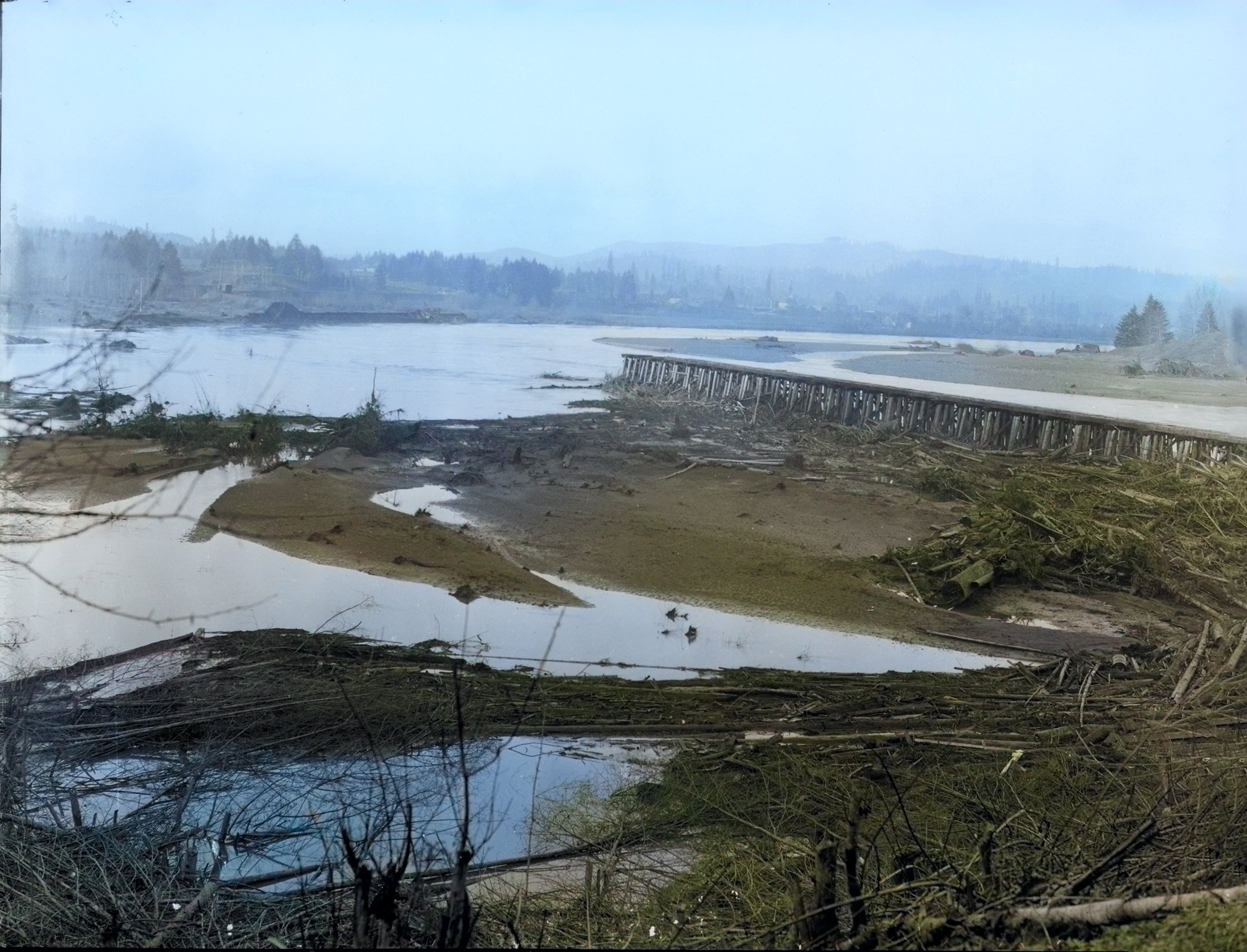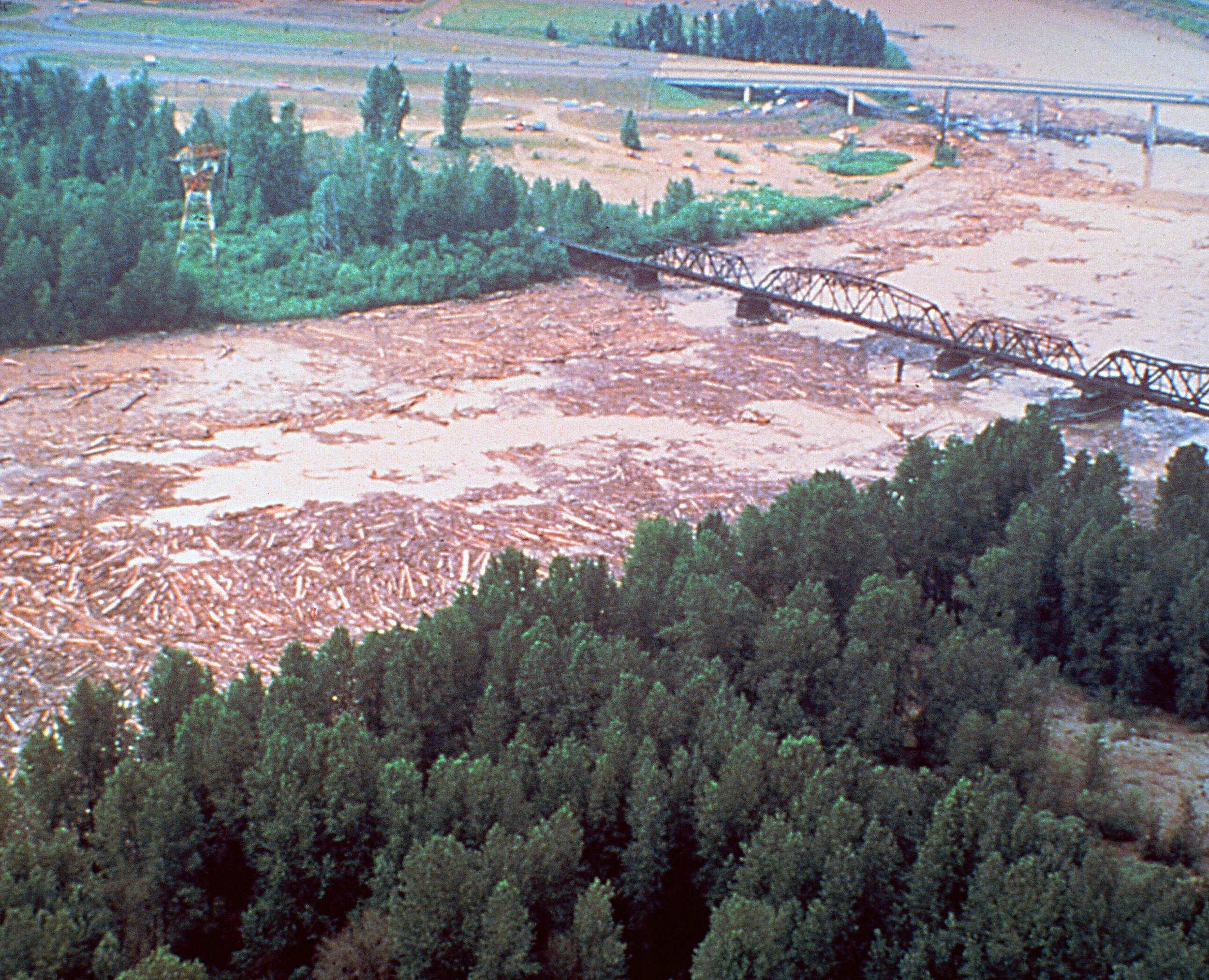Castle Rock and the Fury of the Cowlitz: A History of Floods
The Early Warnings: 1828 to 1906
Castle Rock's history with the Cowlitz River is a testament to the community's resilience against nature's whims. The Hudson Bay Company's 1828 flood report describes debris lodged in trees 40 feet above the riverbank, a chilling indicator of the flood's magnitude. By 1867, settlers faced what was then the worst flood in memory, marking an escalating struggle against nature's forces. The 1894 flood stands as a significant historical moment, being the first to be captured through photography, offering a stark visual testament to the devastation endured by the community. Merely 12 years later, the 1906 flood wrought havoc, nearly erasing the city from the map and highlighting the precarious balance between human settlement and the river's power.
A Community's Resolve: 1933 Flood and Engineering Solutions
The 1933 flood represented a critical juncture, with residents banding together in a desperate, though futile, attempt to sandbag and protect their town. The flood's aftermath was a dramatically altered landscape, necessitating the abandonment of parts of the city and cutting a new channel through its heart. This event spurred a pivotal response: the construction of levees by the Army Corps of Engineers in 1936, a decisive action aimed at safeguarding the future.
Technological Advances and New Challenges
The completion of the Mayfield Dam in 1962 further fortified Castle Rock against the threat of floods, embodying the technological advancements and proactive measures adopted to shield the community. However, the eruption of Mount St. Helens in 1980 introduced unprecedented challenges. The resulting lahars—volcanic mudflows—tested the limits of the town's defenses, revealing both the strengths and vulnerabilities of the engineered barriers.
Reflections on Resilience and Adaptation
The history of floods in Castle Rock is a narrative of human resilience, technological adaptation, and the ongoing dialogue between nature and civilization. While the levees and the Mayfield Dam have provided significant protection, the events following the Mount St. Helens eruption remind us of the ever-present need for vigilance and preparedness in the face of natural forces.
As Castle Rock looks forward, the lessons learned from past floods continue to inform community strategies for disaster response and environmental stewardship, ensuring that the town remains a resilient and enduring presence alongside the Cowlitz River.
